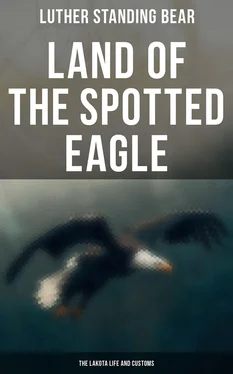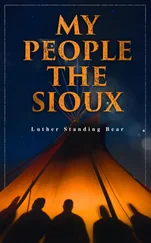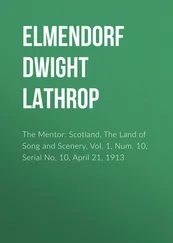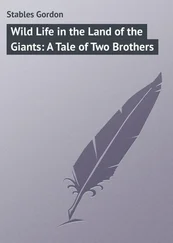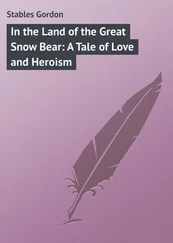Meantime the native people of America could only look on at this devastation in inarticulate and sorrowful amazement. Whereas they had always lived on terms of friendliness and accord with nature, they saw our people ever set themselves in intentional antagonism with set purpose of ‘conquering nature,’ often simply for the sake of conquest.
It is strange that the people of European race coming into possession of this country never did make themselves acquainted with the native people of America. Instead of accepting them simply as one among the human races of the world, endowed with the powers of thought, with emotions and sentiments similarly as are all other races, they have preferred always to view them either in a hazy and spectral light or else in an equally unreal lurid light. Strangely enough, our people have refused to look upon the native people of America as people who had to adjust themselves to their natural environment and to reclaim their necessary food, clothing, and shelter, and to satisfy the demands of their æsthetic nature from among the natural gifts of this land.
Being so constantly misunderstood, the native people of America have been unable to give themselves true expression in the patterns of thought and feeling of the alien race, and hence have been for the most part mute or inarticulate. But now some representatives of the native American race are succeeding in some manner and degree in portraying the thought and feeling and the life of their people to the understanding of the alien race. In this undertaking The Land of the Spotted Eagle does fairly delineate the old native life in such manner as should be grasped with facility by the intelligence and the common human feeling of all persons. If the following paragraph from this book might be extensively and understandingly read by all our people it should go far to correct many false notions:
‘We did not think of the great open plains, the beautiful rolling hills, and winding streams with tangled growth, as “wild.” Only to the white man was nature a “wilderness” and only to him was the land “infested” with “wild” animals and “savage” people. To us it was tame. Earth was bountiful and we were surrounded with the blessings of the Great Mystery. Not until the hairy man from the east came and with brutal frenzy heaped injustices upon us and the families we loved was it “wild” for us. When the very animals of the forest began fleeing from his approach, then it was that for us the “Wild West” began.’
Melvin R. Gilmore
University of Michigan
Table of Contents
As a babe I was cared for and brought up in the same manner as all babes of the Lakota tribe. Wrapped in soft warm clothing made from buffalo calf skin I lay on a stiff rawhide board when not held in my mother’s arms. This board was slightly longer than my body, extending a few inches below my feet and above my head. It was without spring, hard and unbending, but it kept my tender back straight and allowed my neck to grow strong enough to hold up my head.
Special attention was given to the head of every Lakota babe, for a smooth round cranium was considered very pretty, and the Lakota mother, in common with all mothers, wished her child admired and praised. Accordingly, it was the custom to make for a newborn babe a strong but soft and pliable cap of deerskin or of buffalo calf skin. This garment fitted smoothly, but was made to let out as the child grew in size. For six or eight months, or as long as the bony structure was soft, the child wore this cap to keep the head from becoming misshapen.
When night came I was taken from my cradle and my body given further attention. I was stripped of my clothing and placed upon a soft bed by the fire where I was warm and comfortable. My entire body was thoroughly rubbed and cleansed with buffalo tallow. I was allowed to kick my legs, swing my arms, and exercise my muscles. My little brown body got the air and grew used to being without clothing. It was the aim of my mother gradually to get me used to all kinds of temperature, for she knew my health depended upon it. So, soon after birth and even in the coldest months, this training was carried on. It became a ritual that was regularly and religiously kept and I was never put to bed until I had been cleansed and massaged. After a time all Lakota babes became, as the Chinaman said, ‘All face.’
This thoughtful care was taken of me for the sake of keeping my growing body healthy and well formed just as it was at birth. It was intended that I should become an erect and a straight-limbed man without marks or blemishes. My muscles must be supple and I must use them with agility and grace. I must learn to run, climb, swim, ride, and leap with as much ease as most people walk.
Manhood was thus planned in babyhood. My mother was raising a future protector of the tribe. When the days of age and weakness came to the strong and active, there would have to be those to take their places. I was being fitted to take one of these places of responsibility in the tribe.
For the first six years of my life, mother’s thought was so largely centered on me that she sacrificed even companionship with my father in order to give me her full time. A weak or puny baby was a disgrace to a Lakota mother. It would be evidence to the tribe that she was not giving her child proper time and attention and not fulfilling her duty to the tribe. More than that, it was evidence that she had not used proper social discretion and defied an age-old tradition. It was a law with the Lakotas that for the first six years of a child’s life it should have the unrestricted care of the mother and that no other children should be born within the six-year period. To break this law was to lose the respect of the tribe and both father and mother suffered the penalty. A fine, healthy child was therefore a badge of pride and respect and healthy babies were the rule.
As for crippled or deformed babies, I have never known one to be born so. Occasionally, however, a child was born with a blue or red mark on the body, but this caused no concern having nothing to do with the health of the child. Among adults a cripple was so because of some accident of life or war. Now and then a man or woman would become afflicted with a crooked mouth or one that drooped at the corner. The explanation for this condition was that the person so troubled had at some time spoken unkindly or maliciously of another who had passed on to the land of the ghosts. The spirit of the injured one returning in the state of resentment would come close to the offending one and startle him with a quick whistle. The offender in his fright would turn quickly in the direction of the sound and the side of his face would be drawn down at the corner. No innocent person could hear the whistle of the ghost, but the guilty one hearing would be marked for life. Guilt was thus betrayed. So it became bad form for one Lakota to speak harshly of another, and the habit of speaking slowly and carefully with guarded words became the polite custom.
The stiff piece of rawhide on which I was kept most of the day was not at all uncomfortable with its soft padding of buffalo hide. Being so simple in construction, it enabled my mother to carry me about with her while busy with her household tasks. My head reclined on the board and could not bob backwards as she walked or moved about at her work or rode her pony. This cradle was not meant to be attractive, but was just an everyday utility article. For dress-up occasions I was carried about in a lovely cradle made of smooth rawhide boards covered with the softest of buckskin. The hood was also of buckskin decorated with porcupine quills dyed in the brightest of colors. To this gayly colored hood there were fastened tassels of eagle feathers also dyed in bright colors. It was kept perfumed with ‘wahpe waste mna’ or sweet leaves.
Читать дальше
